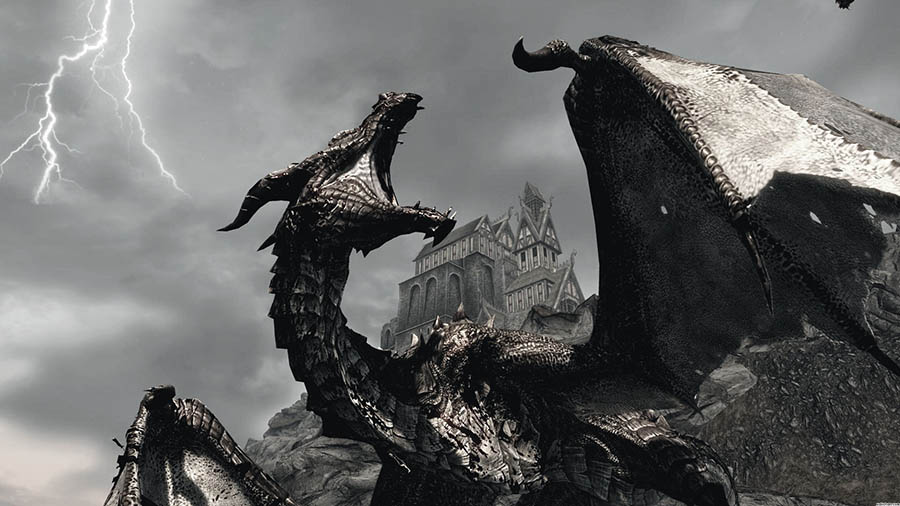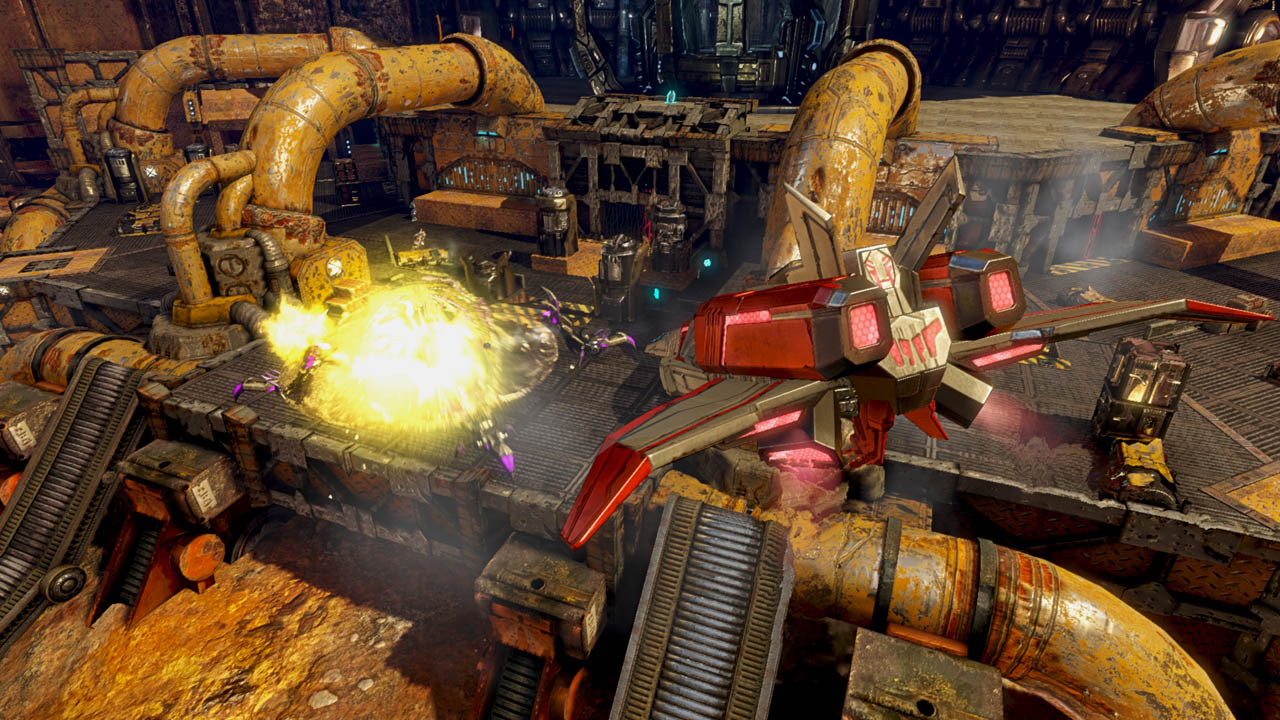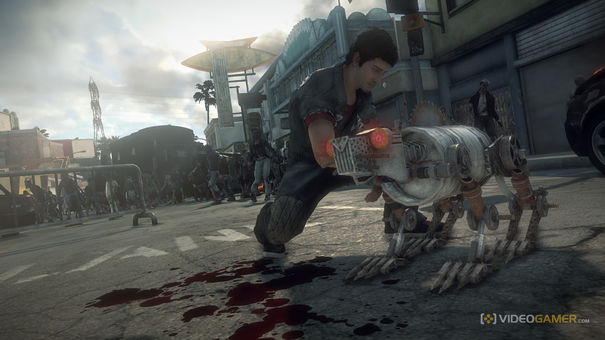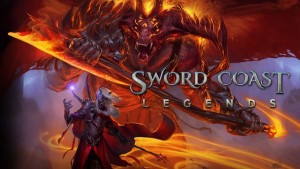

Most of the different series in the Street Fighter franchise have their own look, playstyle, and extra features. There's the animated prequel series Street Fighter Alpha, the blocky 3D of Street Fighter EX, the crazy combos of the Versus games, or even the pro-level Street Fighter III series. They're all very different games, but they all share the same core.
The basic controls of Street Fighter include a single joystick or directional pad and six attack buttons. The joystick/D-pad handles your movement. Moving the joystick or D-Pad left or right will move your character in that direction. Moving it down crouches, while moving it upward will cause your character to jump. Combining left/right and up/down can also cause you to jump forward or backward.
The attack buttons are laid out in a 3x2 formation, with punches comprising the top row and kicks comprising the bottom row. Moving from left to right, the punches and kicks increase in power: Light, Medium, and Heavy. This terminology actually differs from series-to-series: At one point the punch row went from Jab, to Strong, to Fierce, while the Kick row was Short, Forward, and Roundhouse. If you hear those terms from players, you can be sure they've played the older Street Fighter games.
Even at this basic level, there's strategy in Street Fighter. Light Attacks move faster than their counterparts, but they do less damage or have less range. Heavy Attacks do the most damage and have the longest range, but if you miss your opponent, you leave yourself open for a counter-attack. Medium Attacks split the difference between Light and Heavy, being neither the strongest or fastest attacks in your arsenal.
Street Fighter assumes relational directions for things like blocking and performing special moves, meaning moves are dependent on your physical relation to your opponent. Holding Back (away from your opponent) or Down-Back (down and away) when your opponent attacks causes you to block. Special moves are also based on relational directions and required using a joystick combination in tandem with an attack button. Ryu's Fireball, a classic Street Fighter move, is performed by starting in Down and then rolling the joystick into the Forward position, then hitting any punch. The strength of the button used (Light, Medium, Heavy, remember?) determines the strength of the Special Move.
That may sound like a great deal to learn, but everything I just related to you above you'll probably figure out within the first 15 minutes of playing the game. That's the entire Street Fighter experience, many words for stuff you'll figure out while you're playing the game. Each Street Fighter game is based on the core gameplay above, with different tweaks and features that make the games unique.
Honestly, you'll be perfectly fine starting off with the latest release, Ultra Street Fighter IV. While Ultra is a new release, it simply builds upon the foundation laid out by the original Street Fighter IV and its successors. As a new player, there's very little reason to go back to an earlier iteration in a series; it's like looking at a completed four-story building and saying, "I only want the first and second floors." Doesn't make much sense. You can find Ultra Street Fighter IV on Xbox 360 or PlayStation 3 right now, with the Steam version coming on August 8, 2014.
If you don't want to jump directly into the latest and greatest there's two great options. The first is Super Street Fighter II Turbo HD Remix, a remastered version of the original Street Fighter II's last outing. You can get it for $9.99 on the PlayStation Store or $14.99 on Xbox Live Marketplace.
Alternatively, PlayStation owners can pick up the PSOne Classic version of Street Fighter Alpha 3 for their PlayStation 3, PlayStation Portable, or PlayStation Vita. It's only $5.99 and stands as a rather feature complete Street Fighter experience for new players. Some may mention Street Fighter III: Third Strike Online Edition as a possible jumping on point, but the entire SFIII series is built more for veteran players.
No matter which game you start with, I would not recommend online play in the beginning. Many of the players online have been playing Street Fighter for years and they hand out brutal punishments that may discourage you as a new player. Play the Arcade and Training Modes of each title for a good while before you commit to online play.
And don't buy a cheap stick. They break easily. It's not worth it. If you absolutely want arcade stick, start on this thread in the Shoryuken forums.
This is the original set of games that kicked off the entire Street Fighter phenomenon (the first Street Fighter is a curiosity at best). Most of what's considered "Street Fighter" was started here: the one-on-one fights, the lack of a block button, joystiq/button combination special moves, and even Super Combo moves in the later versions.
Games in the Series:
Alpha was a prequel to the original Street Fighter II series, with a new look patterned off of Capcom's other fighting games at the time, Darkstalkers and X-Men: Children of the Atom. Unlike the original, the new character designs are inspired by Japanese animation and the roster ends up being pretty big with more than 30 characters. Super Combos from Street Fighter II were expanded with a larger, three-level Super Combo meter. Chain combos made it easier for new players to perform basic combos and the Alpha Counter system added some defensive options. Probably one of the easier SF series to get into.
Games in the Series:
The last hurrah of detailed hand-drawn animation at Capcom, Street Fighter III takes place after SFII and introduces a host of new characters beside Ryu, Ken, and Chun-Li. The reason why Street Fighter III is considered a game for veterans is the Parry system, which allows players to completely negate attacks by tapping toward their opponent at the right time. In the hands of an expert, Parrying can lead to completely one-sided matches.
Games in the Series:
This is the currently-running Street Fighter series. The characters are rendered in 3D, but the gameplay is still from a 2D perspective. Super Combos and the Super Meter still exist in SFIV, pulled from previous series. Instead of Parrying, SFIV has the Focus System, which allows players to negate certain attacks for a bit of their Super Meter. There's also the Ultra Combo system, which has a meter that builds up as you take damage. Once it's full, you can unleash an extra strong Ultra Combo, which theoretically should even the odds.
Games in the Series:
Capcom foray into the world of fully 3D fighting games, this series is actually developed by a separate studio, Arika. In addition to classic Street Fighter staples, Arika created its own wholly-owned characters for the series, including Skullomania and Allen Snider. A bit slower-paced than other series, by EX3 the series had added a tag-team mode to the game.
Games in the Series:
Capcom has done a number of cross-license games, pitting the Street Fighter characters against characters from another series or publisher. The Versus games in particular launched their own separate Marvel vs. Capcom series. All of these various games are different, while sharing some of the Street Fighter DNA.
Games in the Category:




 Dead Rising 3: Nightmare Mode or bust?
Dead Rising 3: Nightmare Mode or bust? Gaijin on American tanks and the future of War Thunder
Gaijin on American tanks and the future of War Thunder 12 Ways to Work for PC Games Instead of Buying Them
12 Ways to Work for PC Games Instead of Buying Them Torchlight 2: Ravage Raze Berserker Build Guide
Torchlight 2: Ravage Raze Berserker Build Guide Walkthrough Sword Coast Legends
Walkthrough Sword Coast Legends